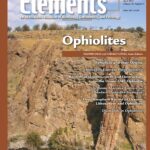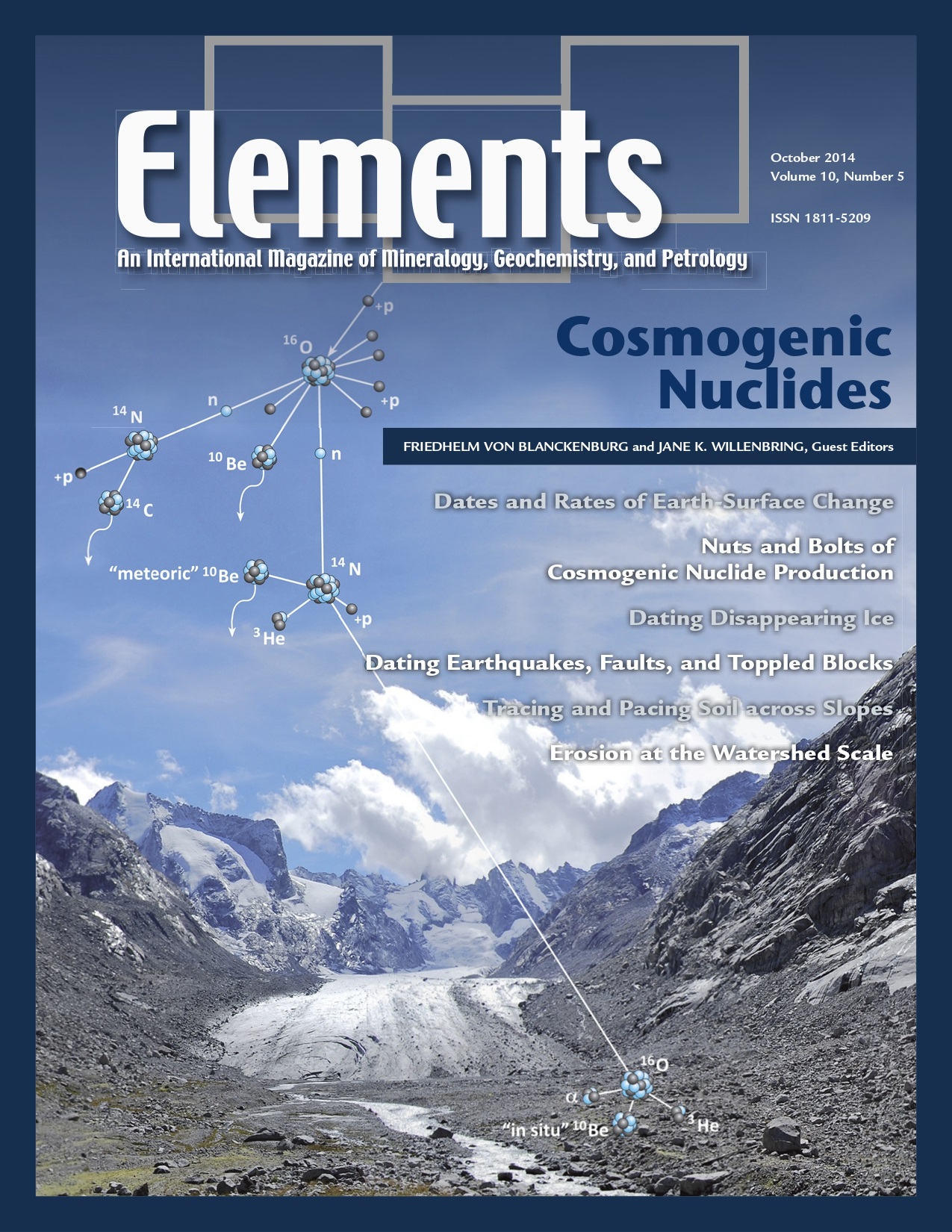
Ophiolites, April 2014, Vol. 10, No. 2
June 28, 2024
Arc Magmatic Tempos, April 2015, Vol. 11, No. 2
June 28, 2024Cosmogenic Nuclides, October 2014, Vol. 10, No. 5
$20.00
The Earth’s surface is the thin, ever-changing layer on which we live. The geochemical study of cosmogenic nuclides is currently revolutionizing our understanding of the processes that shape this surface layer by providing their rates and dates.
Cosmogenic Nuclides
October 2014, Vol. 10, No. 5
The Earth’s surface is the thin, ever-changing layer on which we live. The geochemical study of cosmogenic nuclides is currently revolutionizing our understanding of the processes that shape this surface layer by providing their rates and dates. The underlying physical principles are simple and elegant: when rock or soil moves into the shallow zone of surface irradiation, cosmic rays interact with elements in minerals to produce very rare isotopes—the radioactive nuclides 10Be, 14C, 26Al, 36Cl, and 53Mn and the rare gases 3He and 21Ne. At this exact moment, the nuclide clock begins to tick. These nuclides can reveal the times when a river cuts down through a mountain range, when a glacial moraine was deposited, or when a river or marine terrace was abandoned. Cosmogenic nuclides also serve to measure erosion rates directly: the longer a soil resides at the surface before being eroded, the more nuclides accumulate. Hence, these nuclides provide rates of erosion, from the scale of a pebble to as large as an entire river basin.
Why You’ll Love Elements Magazine:
- Expert Contributors: Articles written by renowned researchers in the field of geoscience.
- Engaging Content: Join a community of readers who are passionate about Elements.
- Exceptional Quality: Each issue is printed on high-quality paper with stunning visuals and detailed illustrations that bring complex scientific concepts to life.
Order your copy of the October 2014 issue of Elements magazine today and delve into cosmogenic nuclides.
Related products
-
Frontiers In Textural And Microgeochemical Analysis, August 2007, Vol. 3, No. 4
$20.00Recent advances have been made in high-resolution in situ methods to image mineral growth patterns, analyse compositional and isotopic zonation, and improve our ability to visualize, study, and model rock textures in three dimensions. These advances provide a significant step forward in the understanding of how rocks form and the history they can tell us.
-
Fluids in Planetary Systems, January 2005, Vol. 1, No. 1
$20.00Water and other geofluids play an important role in the geochemical and rheological evolution of the Earth and other bodies in the solar system. These fluids are responsible for the formation of hydrothermal mineral deposits, affect eruption behavior in volcanic systems and the geophysical properties of the mantle, and significantly affect the way in which rocks deform and fracture.
-
Supervolcanoes, February 2008, Vol. 4, No. 1
$20.00Explosive super-eruptions from large volume, shallow magma systems lead to enormous and devastating pyroclastic flows, the formation of gigantic collapse calderas, and deposition of volcanic ash over continent-sized areas. Recognition that future eruptions from these “supervolcanoes” will undoubtedly have severe impacts on society—and perhaps on life itself—has led to recent public and media interest.




